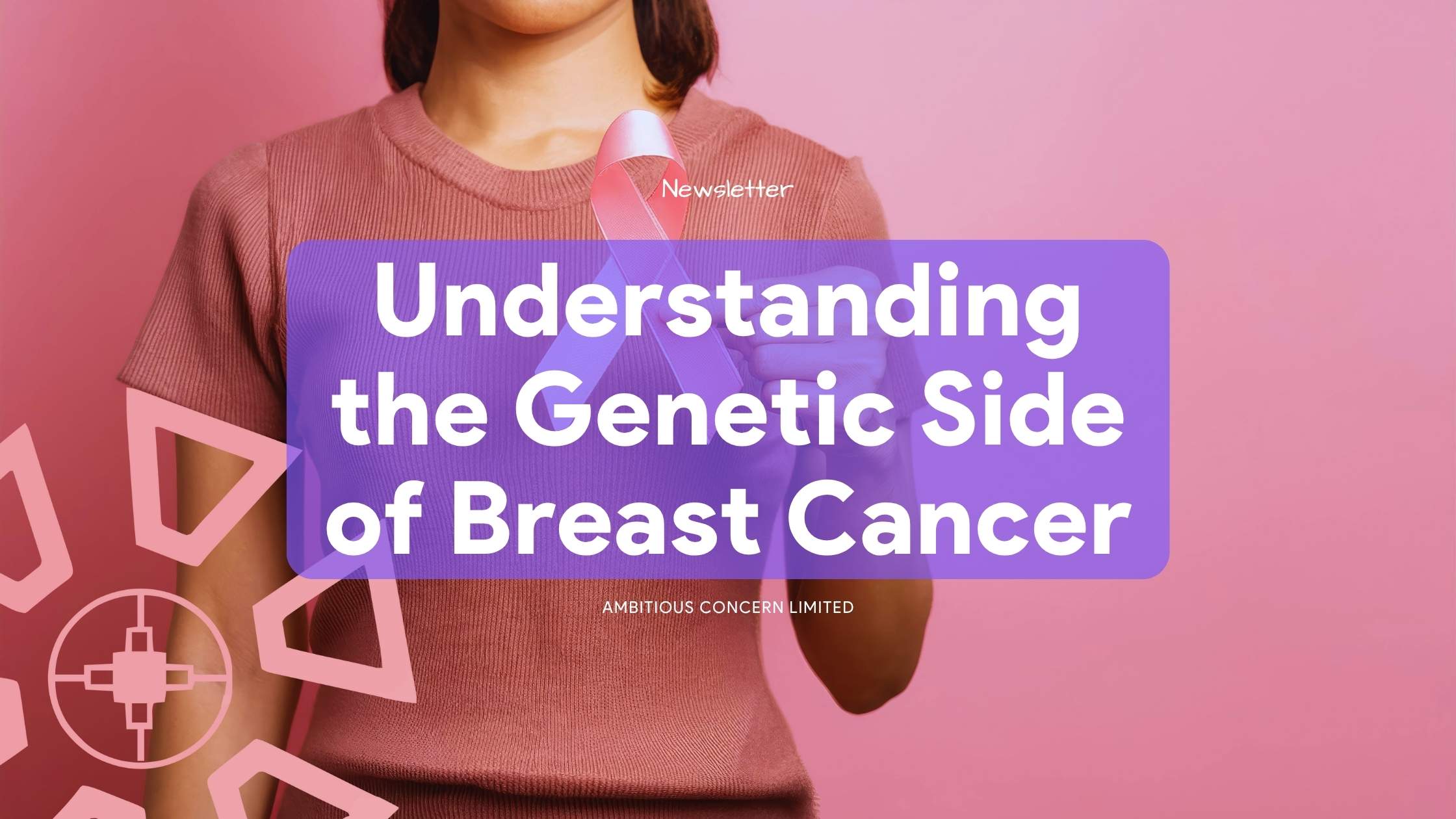Understanding the Genetic Side of Breast Cancer
What Pink October Really Means

Understanding the Genetic Side of Breast Cancer
By Zokah Federal Fafali Adapted and Published by Ambitious Concern Limited
Introduction
Every October, our timelines turn pink. From hashtags like #ItsPinkOctober to awareness walks and fundraising events, the world comes together to honour breast cancer survivors and encourage early detection. Yet beyond the ribbons and slogans lies a deeper conversation — one rooted in science, genetics, and prevention.
Breast cancer is not only a women’s health issue; it is a human one. It remains the most common cancer among women worldwide and continues to affect thousands of families in Africa every year. While lifestyle factors such as diet, alcohol consumption, and hormonal changes play major roles, research increasingly shows that genetic inheritance can significantly influence risk.
Understanding this genetic connection is essential if we want to change how we approach awareness, diagnosis, and long-term prevention.
The Genetic Link: What Science Tells Us
Breast cancer begins when abnormal cells in the breast multiply uncontrollably, forming lumps or tumours that can spread to other parts of the body. For some people, this process starts with mutations — small errors in the DNA that interfere with normal cell repair.
Two genes, BRCA1 (Breast Cancer Gene 1) and BRCA2 (Breast Cancer Gene 2), play a crucial role in this process. When working properly, they help repair damaged DNA and prevent tumours from forming. However, when these genes carry harmful mutations, their protective functions weaken, leaving individuals more vulnerable to cancer.
- Women with BRCA1 or BRCA2 mutations face up to a 70% lifetime risk of developing breast cancer compared to about 12–13% in the general population.
- These mutations can be inherited from either parent. Men can carry and pass them on to their children and are themselves at higher risk of male breast cancer and prostate cancer.
- Other genes such as PALB2, CHEK2, and TP53 have also been linked to hereditary breast cancer.
A strong family history — particularly when close relatives are diagnosed before age 50 — often points to inherited risk. This shows that our health is not just personal but connected to a wider biological legacy.
Why Genetic Testing Matters
Genetic testing is more than a medical procedure; it is a proactive way to understand and manage personal risk. Modern testing can identify inherited mutations early, allowing individuals to make informed decisions about prevention and care.
For those who test positive, medical professionals may recommend:
- Enhanced screening, including earlier and more frequent mammograms or MRIs.
- Preventive medication to reduce cancer risk.
- Preventive surgery, such as mastectomy or removal of the ovaries in high-risk cases.
Equally important is genetic counselling, which helps individuals interpret their results, manage emotional responses, and create a personalised health plan. When handled with care, knowledge becomes empowerment.
Early Detection Still Saves Lives
Not everyone carries a genetic mutation, but awareness and regular screening remain essential for everyone. Early detection is the most effective way to improve survival rates.
Here’s what each of us can do:
- Perform regular self-examinations.
- Schedule routine check-ups and mammograms.
- Share family medical histories with healthcare professionals.
- Encourage open conversations about breast health at home and at work.
The earlier breast cancer is detected, the higher the chance of successful treatment — a fact that sits at the heart of every awareness campaign.
Beyond Awareness: Turning Pink into Purpose
Pink October is more than a celebration of survival; it is a call to action. Beyond ribbons and hashtags, there is a real need for affordable screening, education on genetic risks, and investment in local research across Africa.
In Ghana and many other African countries, stigma, misinformation, and limited access to testing facilities still create barriers to early diagnosis. Overcoming these challenges requires collaboration between healthcare providers, policymakers, and private innovators to make genetic screening and counselling accessible to everyone.
Conclusion
As we mark another Pink October, it is important to remember that awareness alone is not enough. Understanding the genetic foundations of breast cancer helps us take smarter, earlier, and more compassionate steps towards prevention.
This month, start a conversation with your family about your health history. Encourage loved ones to get screened. Support organisations working to make genetic testing and counselling accessible to all.
Breast cancer awareness is not just a campaign; it is a commitment to knowledge, compassion, and prevention. When we understand our genes, we not only protect ourselves but also safeguard generations to come.
Author Acknowledgement
This article was developed from research provided by Zokah Federal Fafali as part of her contribution to breast cancer awareness during Pink October. Ambitious Concern Limited acknowledges and appreciates her effort in promoting health education and advocacy through science-based storytelling.
Fresh Perspectives, Timeless Wisdom Explore Our Latest Blog Edition
View AllJoin our newsletter to stay up to date on features and releases
Stay in the loop with exclusive updates, sneak peeks, and insider tips that will elevate your experience. Don’t miss out


